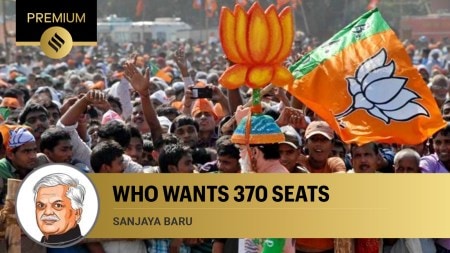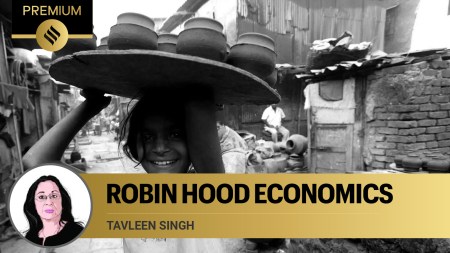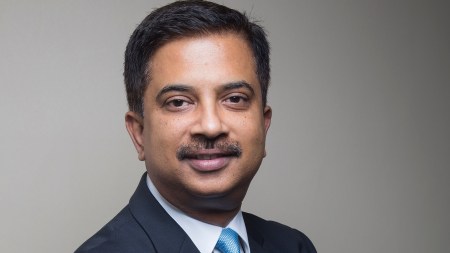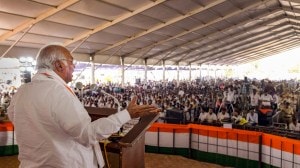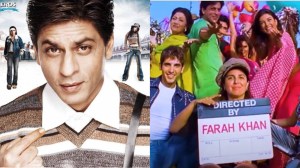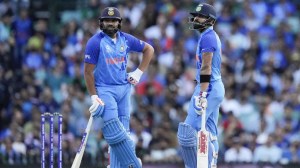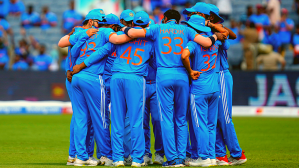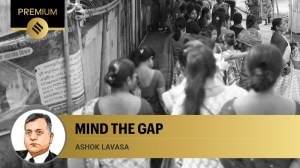- India
- International
Discomfited, annoyed by demand that RBI should be cheerleader for Govt: Former Governor
Duvvuri Subbarao, who worked in both the government and the RBI, has said, “There is little understanding and sensitivity within the government on the importance of central bank autonomy."
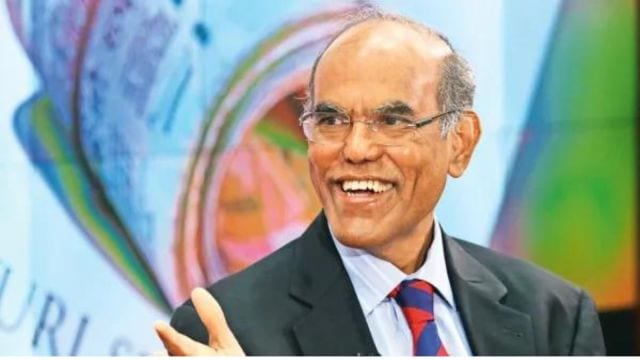 Former RBI Governor Duvvuri Subbarao said government–central bank differences on monetary policy are hardwired into the system (File Image)
Former RBI Governor Duvvuri Subbarao said government–central bank differences on monetary policy are hardwired into the system (File Image)
A tussle between the government and the Reserve Bank of India (RBI) is not something new. Turf wars between the two sides have played out for years as successive Governors sought to fiercely protect the autonomy and independence of the central bank.
Former Reserve Bank Governor Duvvuri Subbarao, who worked in both the government and the RBI, has said, “There is little understanding and sensitivity within the government on the importance of central bank autonomy.”
The government put pressure on the Reserve Bank for lower interest rates and higher growth estimates during the tenures of P Chidambaram and Pranab Mukherjee as Finance Ministers, which was resisted by the central bank, Subbarao said in his latest book.
Difference on policy priorities
With differences between him and the Finance Ministry surfacing on several occasions, Subbarao wrote that he was “invariably discomfited and annoyed by this demand that the RBI should be a cheerleader for the government”.
“There was a lot of suspicion in those early weeks of my tenure that I was a government lackey sent to the Reserve Bank to act at the government’s bidding,” Subbarao wrote in his recent book ‘Just A Mercenary? Notes from My Life and Career’.

Government–central bank differences on monetary policy are hardwired into the system, he wrote. Subbarao, who was the Union Finance Secretary in 2007-08, was the RBI Governor during 2008-2013 when the global financial crisis rocked the financial system.
“Both Chidambaram and Pranab Mukherjee who were finance ministers during that period were vexed by the RBI’s anti-inflation stance, which they thought was stymieing growth,” Subbarao said. The issue became particularly sensitive because the government was continuously being grilled for its ‘policy paralysis’, and they saw a softer interest rate stance by the RBI as a way out of the quagmire, he wrote.
“I had run-ins with both Chidambaram and Mukherjee on the RBI’s policy stance. Both of them invariably pressed for softer rates although their styles were different,” Subbarao said, noting that Chidambaram typically argued his case like the lawyer that he so eminently is, while Mukherjee was the quintessential politician. “He let his view be known and left it to his officers to argue his case,” the former Governor said in his book.
In October 2012, shortly after Chidambaram returned as Finance Minister from the Home Ministry, he set about in earnest to reverse the fiscal profligacy of the Mukherjee regime. “Possibly to compensate for the fiscal tightening he was embarking on, he very much wanted a softer monetary regime and put enormous pressure on the RBI to lower the interest rate. On objective considerations, I could not oblige him though,” Subbarao wrote.
“My refusal to fall in line evidently upset Chidambaram enough to do something very unusual and uncharacteristic— to go public with his strong disapproval of the Reserve Bank’s stance,” he said.
In his ‘doorstop’ media interaction outside the North Block about an hour after the Reserve Bank put out its hawkish policy statement expressing concern on inflation, Chidambaram said, “Growth is as much a concern as inflation. If the government has to walk alone to face the challenge of growth, we will walk alone.”
Pressure from the government was not confined to the Reserve Bank’s interest rate stance; on occasion, it extended to pressuring the RBI to present rosier estimates of growth and inflation at variance with the RBI’s objective assessment, he said.
“I remember one such occasion when Pranab Mukherjee was the Finance Minister. Arvind Mayaram, the Finance Secretary, and Kaushik Basu, the Chief Economic Adviser, contested our estimates with their assumptions and estimates, which I thought was par for the course,” Subbarao wrote.
What upset Subbarao, though, was that almost seamlessly the discussion moved from objective arguments to subjective considerations, with suggestions that the Reserve Bank must project a higher growth rate and a lower inflation rate in order to share responsibility with the government for ‘shoring up sentiment’, he said in the book. “Mayaram went to the extent of saying in one meeting that ‘whereas everywhere else in the world, governments and central banks are cooperating, here in India the Reserve Bank is being very recalcitrant’,” he wrote.
“I was invariably discomfited and annoyed by this demand that the RBI should be a cheerleader for the government. It also dismayed me that the Ministry of Finance would seek a higher estimate for growth while simultaneously arguing for a softer stance on the interest rate without seeing the obvious inconsistency between these two demands,” he wrote.
“I used to take a firm position that the Reserve Bank cannot deviate from its best professional judgement just to doctor public sentiment,” he said. “Our projections must be consistent with our policy stance, and tinkering with estimates for growth and inflation would erode the credibility of the Reserve Bank.”
In the midst of the global financial crisis in mid-October 2008, even as the Reserve Bank was dousing the system with rupee and forex liquidity, Finance Minister Chidambaram suo moto constituted a committee on liquidity management without consulting the RBI. “I was annoyed and upset by this decision. Liquidity management is a quintessential central bank function, and Chidambaram had clearly overstepped into RBI turf,” he wrote.
Not only did he not consult the RBI on constituting the committee, but he had not even informed him of this before the notification was issued. “I called up Chidambaram and let him know in unequivocal terms that his action was totally inappropriate and requested firmly that he dissolve the committee. The call ended with my telling him that the Reserve Bank would not participate in the committee,” he wrote.
In an earlier interview to The Indian Express in July 2016, Subbarao had said, “There are bound to be differences between the government and the RBI especially in a country like ours. So there should be understanding on both sides and they should express their opinion freely and frankly. As far as monetary policy is concerned, the Governor’s word must prevail. If the Finance Minister has a different view, he should try to persuade the Governor.”
When asked whether Prime Minister Manmohan Singh intervened, he said, “The Prime Minister never asked me (about it). He would ask… whether the Finance Minister was persuaded. I would say yes or no. He would leave it at that. He never pressed a point of view.”
Does it mean the PM was supporting you indirectly? “You can say he was supporting me for he remained above this conflict between the Finance Ministry and the Governor.”
Govt-RBI tussle
The four predecessors of current Governor Shaktikanta Das — YV Reddy, D Subbarao, Raghuram Rajan and Urjit Patel — had run-ins with the governments in Delhi on various issues.
Former Governor YV Reddy, who was RBI Governor from 2003 to 2008, shared an uncomfortable relationship with P Chidambaram and had to even offer an “unconditional apology” to the minister after the then Prime Minister Manmohan Singh tried to sort things out between them.
Reddy, who contemplated quitting twice during his tenure, said the government has powers to give directions. But, in giving directions also, unlike other statutes, consultation with the Governor is necessary in regard to the RBI before issuing the directions, according to Reddy who had run-ins with the government.
“Independence to the central bank is granted by the government with a specific purpose,” he said in a speech in Chennai on February 22, 2017.
Raghuram Rajan who was the RBI Governor between 2013 and 2016, said, “In this environment, where the central bank has to occasionally stand firm against the highest echelons of central and state government, recall the words of my predecessor, Dr. Subbarao, when he said ‘I do hope the Finance Minister will one day say, ‘I am often frustrated by the Reserve Bank, so frustrated that I want to go for a walk, even if I have to walk alone. But thank God, the Reserve Bank exists’”. I would go a little further. The Reserve Bank cannot just exist, its ability to say ‘No!’ has to be protected”.”
The tussle between the RBI and government on the issue of higher dividend (surplus payment) to the latter spilt into the open in 2018 during Governor Urjit Patel’s tenure, which eventually resulted in his resignation.
In 2018, Viral Acharya, who was then RBI Deputy Governor, warned that “governments that do not respect central bank independence will sooner or later incur the wrath of financial markets, ignite economic fire, and come to rue the day they undermined an important regulatory institution”, he was echoing the sentiments of past Governors.
Apr 30: Latest News
- 01
- 02
- 03
- 04
- 05


